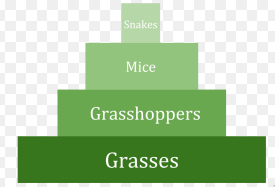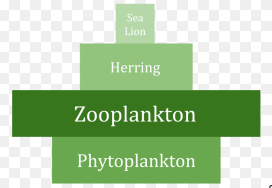Ecology
Source
Sun
- Energy is lost to surroundings
- Not going back to source/producer (non-cyclic)
Definition
Producer
- chlorophyll + photosynthesis
- light energy => chemical energy (glucose)
- 1st tropic level in food chain (named example)
Consumer
- Gain energy + eating
- 2nd, 3rd consumer
Decomposers
- Secrete enzyme + sewage organic matter => inorganic (nitrate ion)
- eg. Bateria, Fungi
- dead matter to release the carbon compound (carbon cycle)
Tropic level
- feeding position in the food chain
Food Chain
Linear
- network of links in a food web starting from producer organisms and ending at an apex predator species
- How organisms are related by the food they eat
Food webs
Energy
Enter
Loss 90%
- respiration + energy (heat)
- energy is used (cell division, active transport)
- uneaten part
- faeces (digestion) + urine (excretion)
Passed Down 10%
Energy efficiency
Short Chain
- producer => man
- more efficient (less energy lost)
Long Chain
- producer => cow => man
- less efficient
Pyramid
Number
Upright

Inverted

Biomass
Carbon Cycle
Producer
- CO2 take in => producer => CO2 released
Decomposition
Respiration
Carbon Sink
- CO2 take in > CO2 released
- Long period of time
Forest and Ocean
- Photosynthesis, take in CO2
- Glucose + food chain
- cellulose +
- fossil fuel
Sewage
Bacteria (flowing river)
- Used up O2 due to respiration
- O2 decrease, fish die
Eutrophication (lake)
- Nitrate ion
- Algae multiply, block sunlight
- Underneath plant die + bacteria multiply
- fish die
Bioaccumulation
- Insecticide
- eaten by a list of organisms
- Insecticide will pass down to next tropic level
- accumulate at the highest tropic level (tertiary consumers)
Sewage treatment plant
Aerobic bacteria
- Stirrer + mix + oxygen + bacteria
- Secrete enzyme + organic matter
Anaerobic bacteria
- eg. fungi algae
- sludge => methane => electricity

